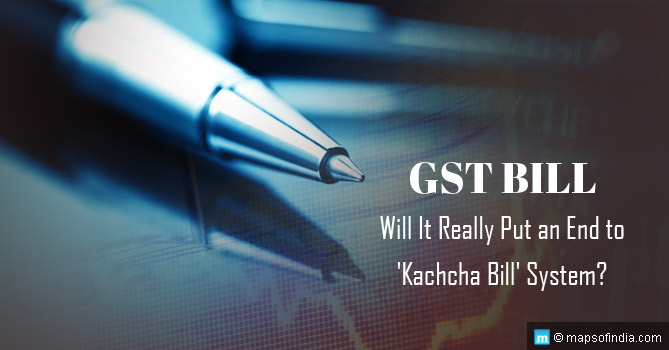The capital city of Delhi is humming with tension and buzzing with activities, as it gets prepared for the Delhi State Legislative Assembly Elections of 2013, scheduled to be held on December 4th, and the results to be announced on December 8th, 2013. The chief contestants in this election are Sheila Dixit from the New Delhi Assembly constituency – the present Chief Minister of Delhi, planning a rerun under the Congress banner, BJP Chief Ministerial candidate Harsh Vardhan from the Krishna Nagar constituency and of course Arvind Kejriwal with his Aam Aaadmi Party (AAP). The nominations have all been filed and the stage is set. The election was supposed to be a political duel between the Congress and the BJP, but the equation had changed, with the unprecedented entry of Arvind Kejriwal. While both the Congress and the BJP had brushed off Kejriwal’s claims of a practically undisputed win, both the majority parties, however, acquiesce to the fact that, Kejriwal’s presence might upset the vote bank equations.
Arvind Kejriwal, a mechanical engineering graduate from the Kharagpur Indian Institute of Technology (IIT) and later a top official of the IRS, founded AAP in November, 2012 (following Anna Hazare’s pro- Gandhi agitations), in an attempt to cleanse the political system of our country. The AAP, only 11 months old, has 12000 registered members, including 4000 students, of which 400 are IITians and 150000 ‘prabharies,’ each vested with the responsibility of supervision of 20 families, in his neighborhood. The corruption crusader Arvind Kejriwal and his AAP acquired their election mascot only recently – a broom, essentially a symbol for cleanup of corruption. AAP is a much debated topic amongst the voters. While many people are skeptical about Kejriwai’s claims of forming a ruling Government in just a year’s time, AAP continues to be a source of concern for both the Congress and the BJP.
New election campaign strategies:
Emulating Barak Obama’s model of election campaign, where he had used internationally famous singers like Beyonce, Jon Bon Jovi, Katy Perry, Stevie wonder and Alicia Keys, especially to target the young voters, a similar strategy is being implemented by our political parties, in this Delhi election. Singers like Vishal Dadlani, Shilpa Rao, Rabbi Shergil, Shruti Pathak and Meiyang Chang happens to be quite frequent performers in college fests, common centrioles for anti – establishment exercises.
This is the first time that singers are being included in the campaign procedures, hopping around various cities, organizing concerts and gigs. The primary aim, to rope in popular singers in the election campaign, is to give a youthful face to the otherwise ugly political causes, targeting mainly the youth community, and to give the whole campaign a pro – youth façade. Point is, will the screaming guitars and the drum rolls, accompanied by popular voices singing hit songs amidst asking for vote, be able to tip the balance, in favor of the concerned political party?
Adding a little stardust to cover up the political dirt, had been a common strategy for quite some time now, like when the Hindi film megastar Rajesh Khanna campaigned for himself, aided by his long divorced wife Dimple Khanna and daughter Twinkle Khanna. The public had witnessed many such spectacles, but the propensity of adding the face of a movie star to a political campaign, is still a prevalent practice. Yet another example of encashing the popularity of a celebrated movie star, to swing the vote banks is reflected in BJP’s efforts, to influence 30 lakh Puravanchali voters, by using the superstar of Bhopuri fims, Manoj Tiwari, as a part of the election campaigns, in the perspective of the upcoming Delhi elections. For the same reasons, AAP has enrolled the famous Bheem of the megaserial Mahabharata, played by the actor Praveen Kumar, from Wazirpur, as a part of their election campaign. AAP is also one of the chief advocators of holding musical concerts as a part of the election campaigns.
Delhi Assembly elections – the ‘caste’ factor:
As it happens, the ‘caste’ factor can play a pivotal role in determining the outcome of the impending elections in about 20 constituencies, in the suburbs and the rural belts of Delhi. The residents of this area seem to be a closed community, preferring candidatures from their own communities, rather than being biased by political gimmicks. Delhi has around 364 villages, with the Jats predominating in 225 villages, Gurjjars in 70 villages and the Yadavs in 35 villages. The Jats will prove to be an adjudging factor in constituencies like Rithala, Nangloi, Mehrauli, Mundka, Najafgarh, Matiala, Rithala and Bijwasan. Of the total voting community of Delhi, 10 percent are Jats, while, 7% are Gurjjars. The rest of the vote bank equation can be framed as, SC community – 17%, Muslim community – 12%, Punjabi community – 9%, Sikh community – 4% and the Vaish community – 8%. The Gurjjar community will call the shots in constituencies like Tughlakabad, Sangam Bihar, Gonda, Karawal Nagar, Okhla, Badarpur, and Gokulpuri. The caste factor may turn out to be advantageous, for both the Congress and the BJP, because these parties had focused on the community vote banks, specifically, as a part of their election campaign.
The caste obligations seems to be a very strong point of the communities, which even overrides the polling rights, as evident from the statement of Raj Kumar (44), a trader and a resident of the Gurjjar dominated area of Kotla – Mubarkpur, a ward belonging to the Kasturba Nagar constituency, “While voting for general elections one must see work but for assembly and municipal elections one must align along one’s caste. And, we anyway receive pressure from our family and friends to vote for our caste only”. Kasturba Nagar is a south Delhi constituency. While the residents of south Delhi have some major complaints regarding drainage, water logging and garbage disposal, it is evident that, caste adherence takes priority above all these issues.
Conclusion:
The estimated legitimate voting population of the city is 1, 14, 88,752, with 63, 68,694 men and 51, 19,517 women with 3.04 percent of the total voting population falling in the youth category. While Chief Minister Sheila Dixit, with three sequent wins in her bag, is confident that the accomplishments of the Congress party itself will be sufficient to turn the vote bank in her favor, BJP has a different version. BJP claims, that their emergence as the majority in the municipal elections of the city, where BJP had captured all the three municipalities of Delhi, is indicative of the changing attitude of the public and the harbinger for radical changes.
South Delhi Municipal Corporation Mayor Sarita Choudhury (BJP), had accused the Congress of making hollow promises and had commented that, “Inflation, corruption and unauthorized colonies are going to be the major issues in this election. As a part of our ‘Ghar Ghar Bhajpa’ campaign, leaders and party workers are visiting and meeting people door-to-door”. With the BJP focusing on the ‘civic issues’ of drainage and water logging, as a part of the election campaign, she further added that, “The current government has no concrete plan on that. As soon as we come to power, we will create a joint committee by taking all the three bodies, MCD, DDA and PWD together on this issue, for a new drainage system, to alleviate people’s problems”.
While a large section of the voters bespoke of their dissatisfaction with the existing parties, they also expressed their disinterest in the new entrants like AAP, and have declared to opt for the ‘none of the above option’.
As for AAP, it will definitely put a bite in the vote banks of BJP and Congress, despite the veiled contempt that these two parties may have for the new contestant. However, certain sections of the voters are hard core Congress followers. AAP’s campaign is based on the promises of a corruption free government, a 50 percent reduction of the power costs and 700 liters of potable water for every family. But, AAP’s chances of turning around the hard core party allegiances in their favor are slim. Despite the backing of the auto rickshaw unions, and the massive postering campaign, featuring the significant broom, it is to be seen, how much of this support is actually converted into ballots, in the favor of AAP.




